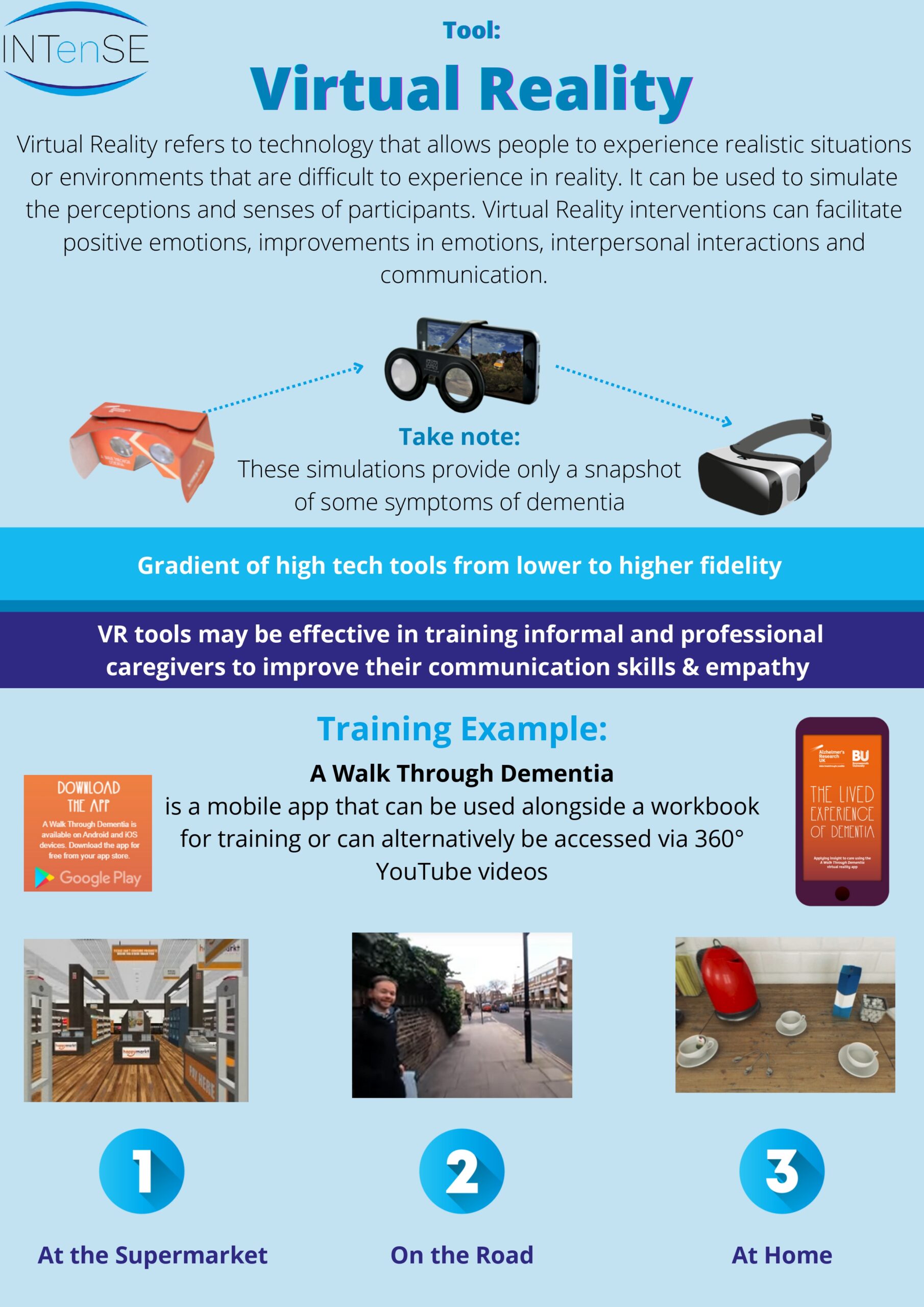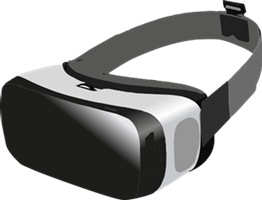Virtual reality refers to technology that allows people to experience realistic situations or environments that are difficult to experience in reality. It can be used to simulate the perceptions and senses of participants. Virtual reality interventions can facilitate positive emotions, interpersonal interactions and communication.

A Walk Through Dementia – walking home
360° Youtube video:
A Walk Through Dementia mobile app, developed as part of the Dementia Education and Learning Through Simulation 2 package, is a high tech simulation exercise.
The scenarios can be used with higher tech virtual reality headsets or cardboard headsets, where participants can place their phones into the cardboard.
These higher tech training scenarios can simulate a variety of symptoms including difficulty navigating, memory issues, and perceptual disturbances, among others.
Scenarios (that can be downloaded):
- A walk through dementia (presentation, scenario)
Symptoms such as perceptual changes can cause people with dementia to say or do things that do not make sense to others, which can be frustrating, confusing, or upsetting for the person, and for their carers.
VR can also help to understand how changes to vision and sensory impairment can worsen perceptual difficulties. In turn, these symptoms may make people with dementia feel unsure about their surroundings, less confident, and less independent







